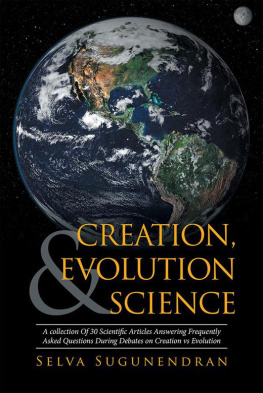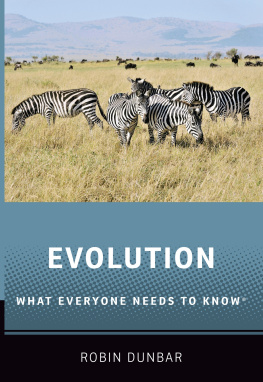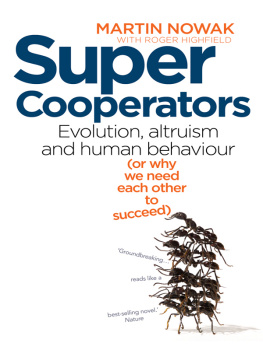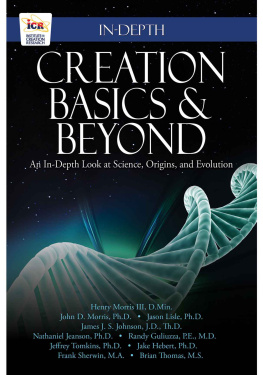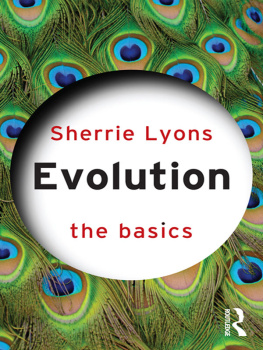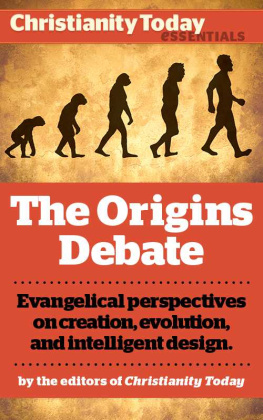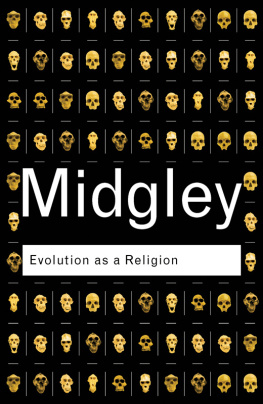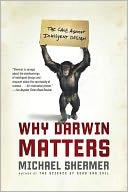Acknowledgments
Many people, not all of whom have agreed with, or approved of, my style, presentation, or conclusions, have read over parts of this book at various stages, and I thank them sincerely for it. They include Andrew Lustig (Davidson College), Michael Ruse (Florida State University), Wes Elsberry (National Center for Science Education), Jarvis Streeter (California Lutheran University), Ken Miller (Brown University), Kirk Fitzhugh (Natural History Museum of Los Angeles County), Barbara Forrest (Southeastern Louisiana University), Linda Silver (Great Lakes Science Center), Kevin Padian (University of California Berkeley), David Steinmetz (Duke University Divinity School), Dallas Willard (University of Southern California), William McComas (while at the University of Southern California), John F. Haught (Georgetown University), Keith B. Miller (Kansas State University), senior editor Vincent Burke and senior production editor Mary Lou Kenney (Johns Hopkins University Press), and the following people who are now or were formerly associated with Westminster Presbyterian Church in Westlake Village, California: John Burnett, Rob Douglas, Nathan Reeder, Rob Seitz, Dick Thompson, Suzanne Thompson, Beau Wammack, and Andrew Cahill. I thank the Rev. Paul W. Egertson (California Lutheran University) for pointing me toward more accurate estimates of some of the membership numbers that appear in the appendix.
I am especially indebted to four outstanding youth workers, Rob Seitz, Dave Carpenter, Rob Douglas, and Nathan Reeder, for providing me with the opportunity to interact with middle school and high school students in a welcoming, learning, and supportive church setting. I have also benefited greatly from conversations with students, friends, and relatives during recent years, among them Matt Toyama, J. Trent Collier, Roger Ellis, Scott Adam Daehlin, Don Partenfelder, and the always-inspiring students of the Westminster Presbyterian Church SYF program.
Most of all, I thank my wife, Sue, for her constant love and support and my children, Alex and Paul, for their inspiration. All three of them also read parts of the book as it was being readied for publication and offered helpful suggestions.
Appendix
MAJOR CHRISTIAN DENOMINATIONS
AND THEIR STANCE ON SCIENCE, EVOLUTION,
AND CREATIONISM / INTELLIGENT DESIGN
My assertion in the introduction and chapter 1 that most Christians accept biological evolution as being compatible with their faith is easily supported by referring to the Catholic Church. Catholics (including Roman Catholics and Eastern Orthodox) constitute some 1.2 billion of the estimated 2.2 billion people worldwide who count themselves as Christians. Thats more than half of all Christians and roughly one-sixth of the entire world population. Apart from the Galileo episode, the Catholic Church has had a long history of accepting the findings of science, including evolutionary biology, as revelations of how Gods world works.
However, because the creationism and ID movements are very much a Protestant (and mostly U.S.) phenomenon, we should look beyond the Catholic Church. In the United States, there are slightly more Protestants than Catholics Non-trinitarian groups (e.g., Jehovahs Witnesses, Church of Jesus Christ of Latter-day Saints, Unitarian Universalists) are not listed here, though the latter two are supportive of evolution being compatible with faith.
CATHOLIC AND EASTERN ORTHODOX CHURCHES
Roman Catholic Church (66.6 million [62.0T 71.2A])*
Recent Statements
1996. Pope John Paul II, speaking at the annual meeting of the Pontifical Academy of Sciences, the Catholic Churchs science senate.
Today, almost half a century after the publication of the Encyclical, fresh knowledge has led to the recognition that evolution is more than a hypothesis. It is indeed remarkable that this theory has been progressively accepted by researchers, following a series of discoveries in various fields of knowledge. The convergence, neither sought nor fabricated, of the results of work that was concluded independently is in itself a significant argument in favor of this theory.
* T = Time Almanac (2002);
Y =Yearbook of American and Canadian Churches (2007);
A = Major Religions of the World Ranked by Number of Adherents;
US = reports of the U.S. Census Bureau;
W = Wikipedia.
For a more detailed explanation of these sources, please see appendix note 1 on p. 147.
2006. Vatican newspaper LOsservatore Romano, article by Fiorenzo Facchini.
intelligent design is not science and teaching it alongside evolutionary theory in school classrooms only creates confusion.
2009. Archbishop Gianfranco Ravasi, head of the Pontifical Council for Culture (The Telegraph [UK], 11 February 2009). (From Andy Coghlans article Vatican Backs Darwin, Dumps Creationism in the February 11, 2009, New Scientist Short Sharp Science news blog.)
Archbishop Ravasi noted that acceptance of evolution could be traced to St. Augustine and St. Thomas Acquinas, adding What we mean by evolution is the world as God created it.
Note: The membership figure used in the text, 1.2 billion, is the estimated global figure; for the United States the estimate is approximately 67 million. Fiorenzo Facchini, author of the 2006 article and a professor at the University of Bologna, lamented that certain American creationists had brought the debate back to the dogmatic 1800s, and said their arguments were not science but ideology.
Greek Orthodox Archdiocese of America (1.75 million [1.5Y,A2.0T])
Recent Statements
2006. A Theology of Nature: An Introduction (first published in 1991), by Metropolitan Paulos Mar Gregorios of the Orthodox Syrian Church of the East, posted on the web site of the Greek Orthodox Archdiocese of America and thus assumed (by me) to be endorsed by the GOAA.
The created order is a space-time process, or rather a procession, orderly and sequential, journeying through life from something to something. Life is an important aspect of that procession from origin to perfection; it is through the evolution of life that the procession moves forward (referring to the writings of Gregory of Nyssa in the fourth century).
EPISCOPAL/ANGLICAN COMMUNION
Episcopal Church (2.3 million [2.2Y2.4T])
Recent Statements
1981. The 74th Annual Council of the Diocese of Atlanta, in formal action on January 31, 1981, acted without a dissenting vote to oppose by resolution any action by the Georgia Legislature to impose the teaching of Scientific Creationism on the public school system. In an eloquent Pastoral Statement on Creation and Evolution, the Rt. Rev. Bennett J. Sims, Episcopal Bishop of Atlanta, wrote:
If the world is not Gods, the most eloquent or belligerent arguments will not make it so. If it is Gods world, and this is the first declaration of our creed, then faith has no fear of anything the world itself reveals to the searching eye of science.
1982. Statement from the 67th General Convention of the Episcopal Church.
... the House of Bishops concurring, That this 67th General Convention affirm its belief in the glorious ability of God to create in any manner, and in this affirmation reject the rigid dogmatism of the Creationist movement, and be it further resolved, That we affirm our support of the scientists, educators, and theologians in the search for truth in this creation that God has given and entrusted to us. Additionally, clergy and scientists from both the Catholic and Evangelical traditions in Anglicanism [= Episcopal Church in the United States] have accepted evolution from Darwins time to the present. In a resolution passed by the General Convention in 1982, the Church affirmed the ability of God to create in any form and fashion, which would include evolution.


